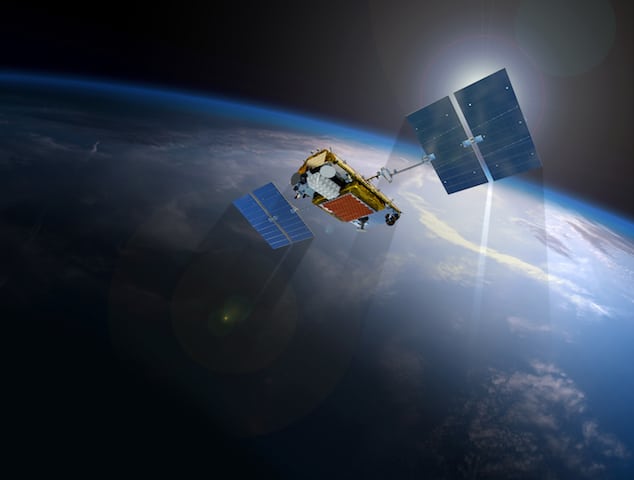
Iridium NEXT satellite. Photo courtesy of Iridium
New aircraft terminals, a next-generation satellite network and support for a global air traffic surveillance system has Iridium CEO Matt Desch feeling confident about his company’s future position in aviation. During Iridium’s second quarter earnings call, the chief executive provided updates on Aireon’s space-based ADS-B service and new L-band airplane terminals designed to provide speedier cockpit connections for pilots and flight operations departments.
Iridium’s aircraft connectivity focus moving forward is centered around Certus, which is the company’s multi-service communications platform designed to provide connectivity to multiple industries, especially maritime and aviation operators. The service will provide support for commercial airliners, and also lower cost hardware for general aviation fixed- and rotary-wing aircraft.
Hardware suppliers for Certus are already rolling out the new terminals that will be equipped to ships and airplanes to provide connectivity. For example, in May, Cobham Satcom unveiled its first Iridium Certus connected terminal, the Sailor 4300, for maritime operators. At NBAA 2016, Thales unveiled its FlytLink connected cockpit and crew operational satellite-based connectivity platform, enabled by Certus.
“We kind of focus a bit more on the cockpit and operational services for airlines as opposed to the cabin. Certus will change that slightly, but still I think it is going to be primarily focused on the cockpit,” said Desch.
Desch also provided more clarity about the speeds Certus will support. He said speeds will become progressively faster as new software and satellites become available.
“The initial version of Certus is a speed of 350 kbps, which is upgradable in the terminals through firmware changes to 700 kbps as the network is complete. But that is more like a software version almost of our Certus capabilities. The original version is going to be uploaded to each of the new NEXT satellites as they go on,” said Desch.
Furthermore, the terminals manufactured by Cobham and Thales will have what Desch calls “dual mode” capability, meaning they will operate both on existing Iridium satellites and the NEXT constellation. Initial speeds will vary between 128 kbps on the legacy network and 350 kbps as more NEXT satellites are deployed.
Progressively, terminal speeds will evolve to 700 kbps and eventually 1.4 mbps, which Desch says is less dependent on how many satellites are being deployed and more on what software version is featured on the satellites.
The higher speed connections will be made available for the commercial airliner market, while lower speed terminals will target general aviation fixed- and rotary-wing aircraft.
The earnings call also featured some updates on progress with Aireon’s efforts to make global space-based ADS-B surveillance a reality. Aireon’s most recent progress includes the signing of a memorandum of understanding with Saudi Air Navigation Services (SANS) to develop a concept of operations for space-based ADS-B in Saudi Arabian airspace. Netherlands’ air navigation service provider LVNL has also signed a new agreement with Aireon to evaluate the cost and efficiency of space-based ADS-B as a secondary and contingency air traffic surveillance system.
Desch also discussed Aireon’s progress in working with the FAA to evaluate the deployment of spaced-based ADS-B for the U.S. National Airspace System. Both Desch and Tom Fitzpatrick, CFO of Iridium, are confident that the FAA will eventually sign on for space-based ADS-B. A recent report published by the FAA NextGen Advisory Committee showed the desire of U.S.-based airlines to use space-based ADS-B for reduced oceanic separation.
The FAA is evaluating the concept of operations for space-based ADS-B in the U.S., but no details about a timeline or decision are available at this time. “So it still continues to be more a matter of when they will deploy it as supposed to if they will deploy it, and I think that will become a lot clearer as we get into 2018,” said Desch.